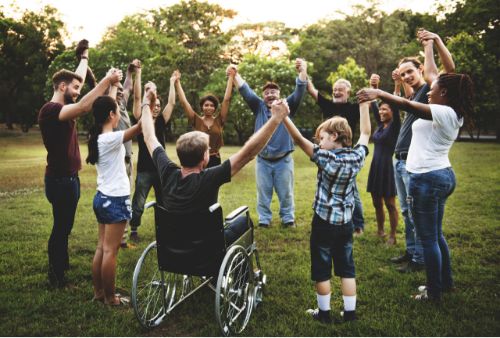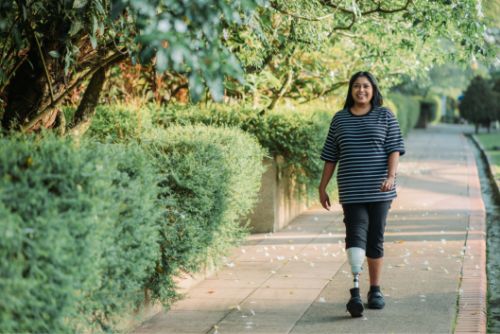
Blog Post Sponsored by NACDD’s
Center for Health Equity
By: Katie Cacal, MPH
The National Association of Chronic Disease Directors celebrates Disability Pride Month this July and commemorates the 32nd Anniversary of the signing of the Americans with Disabilities Act (ADA) on July 26.
This important civil rights law prohibits discrimination against individuals with disabilities in all areas of public life, including jobs, schools, transportation, and all places that are open to the general public. Disability Pride recognizes disability as fundamental to a person’s identity, and something of which a person can be proud–as opposed to a description of a state of illness or injury.
Disability Pride also reaffirms the right of people with disabilities to be active, healthy, contributing members of their communities. (Learn more about Disability Pride Month at the National Council on Independent Living.)

This month also presents an opportunity for action. Twenty six percent (one in four) adults in the United States have some type of disability. People with disabilities are a large and diverse group and experience a higher rate of chronic disease compared with other Americans. These disparities call for an increased focus on implementing inclusive approaches, techniques and strategies in chronic disease prevention and management interventions.
Paramount among these is partnering with the disability community, whether it be with a disability service organization, (e.g. one that serves people with a specific condition or more than one) or working with a government agency that provides services to those with disabilities (e.g. vocational rehabilitation or a state agency for blind individuals).
Chronic disease professionals also can tap those in their community that have disability expertise, such as allied health professionals, adapted physical education teachers, or those who run recreation programs for disabled community members.
Disability Pride month also allows us to highlight the intersectionality of race, disability, and poverty. Black, Indigenous, and other people of color who have disabilities face additional barriers to education and employment that further limit their earning potential. Black people also are more likely to have a disability.

Fourteen percent of working-age Black people have a disability compared with 11 percent of white people and eight percent of Latinx people.1 In fact, Black people are most likely to have a disability in every age group. The relationship between race and disability, however, is complex. For example, Latinx people are more likely to have a disability as they age. Additionally, having a disability creates extra costs for people and can limit financial security.2
Race and disability are not separate sources of disadvantage that parallel each other. Race and disability are overlapping identities, both of which are related to systemic inequality. It often is said that disability is both a cause and consequence of poverty and that poverty and disability reinforce each other, contributing to increased vulnerability and exclusion.
Understanding the interconnected nature of oppression will help us realize the opportunities to highlight the interconnected nature of liberation. The opportunity exist for leaders in the disability and communities of color to start a new conversation about the interrelationships of race, disability, and poverty.
Throughout Disability Pride Month, NACDD has been sharing efforts on our social media channels (Facebook, Twitter, LinkedIn) to support the inclusion of people with disabilities and offering tips and insights on how you can become a stronger ally.
- Learn more at CDC’s Become a Disability Ally page.
- Learn more about NACDD’s disability inclusion work.

Citations
- Goodman, N., Morris, M., Boston, K., Walton, D. National Disability Institute. (2015). Financial Inequality: Disability, Race and Poverty in America. https://www.nationaldisabilityinstitute.org/wp-content/uploads/2019/02/disability-race-poverty-in-america.pdf.
- She, P. & Livermore, G.A. (2007) Material Hardship, Poverty, and Disability among Working-Age Adults. Social Science Quarterly. (88)4:970-989
